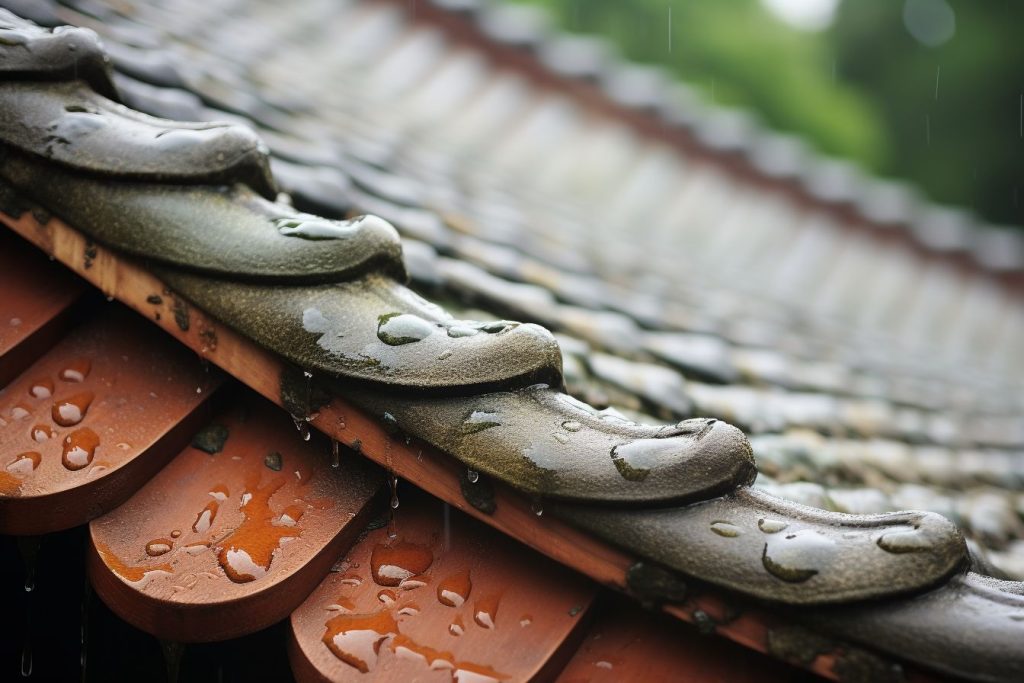Roof maintenance can be daunting, especially if your roof is waterproofed. Did you know that even the most well-installed waterproofing system can fail over time without proper upkeep? This blog post guides you through easy yet effective steps to maintain waterproofed roofs and save on hefty repair costs.
Let’s dive in and ensure your home stays dry and damage-free!
Key Takeaways
- Regularly clean and inspect your waterproofed roof to prevent water damage and maintain its integrity.
- Clear debris, maintain cleanliness, and address ponding water to promote a healthy roof structure.
- Maintain and repair flashings to ensure proper water protection for your home’s roofing system.
- Prioritize attic insulation and add an extra waterproof layer to improve the longevity of your waterproofed roof.
- Schedule regular professional roof inspections, address leaks promptly, remove snow and ice buildup, and manage tree and vegetation growth for ongoing roof maintenance.
Steps to Waterproof Your Roof

For a durable and watertight roof, specific steps must be followed.
- Start by thoroughly cleaning the roof substrate. This includes removing any debris or dirt that might hinder the adhesion of the waterproofing materials. Pressure washing can be helpful in this stage.
- After the substrate is spotlessly clean, proceed to prime your roof. Priming is a preparatory stage for the main coating, ensuring optimal adhesion and durability.
- Pay close attention to the details on your roof during treatment. Particular elements such as flashings and vents also need waterproofing maintenance.
- Applying a waterproofing membrane or roof coating comes next after treating the finer details of your roof.
- Ensuring your handiwork stands the test of time involves regular inspections and maintenance tasks like checking for damaged shingles or removing dead leaves.
- If you encounter any challenges along these steps, do not hesitate to call in professional help for the best results.
Regular Inspections

Regular inspections are essential to maintaining a waterproofed roof, as they allow for the identification and addressing of potential issues before they become major problems.
Clear debris and maintain cleanliness
Clearing debris becomes crucial to prevent water accumulation and drain clogging, especially on flat roofs. This regular practice ensures that your drainage system remains functional, promoting a healthy roof structure.
A clean rooftop aids in the prevention of moss and mold growth, which could deteriorate the roofing material over time.
Securing gutters forms an integral part of maintaining cleanliness for both commercial and residential roofs. Routine cleaning tasks encompass tidying up the roof and its associated systems, such as downspouts and drains.
Removing any obstructions like fallen leaves or branches immediately is essential to ensure proper water flow off the roof. Keeping a clean roof fosters a safer environment for workers engaged in inspections or repairs while reducing potential roofing hazards significantly.
Address ponding water
Ponding water can lead to significant damage, particularly on flat roofs. This problem typically occurs when water remains stagnant for 48 hours or more, gradually deteriorating the roofing materials.
Regular roof inspections are critical in identifying and addressing such issues early on. Waterproofing maintenance experts swiftly tackle ponding conditions, preventing potential leaks or water damage repairs from escalating into substantial repair costs.
Thus, homeowners must prioritize timely action against this persistent threat to safeguard their properties effectively.
Maintain and repair flashings.
Regular maintenance of roof flashings is crucial for preserving the integrity of your roof and preventing costly repairs. Flashings, typically installed at the transition points between horizontal and vertical surfaces on a roof, are vital in keeping water out.
Over time, flashing can be damaged due to weathering, aging, or improper installation. Regularly inspecting and repairing flashings can ensure proper water protection for your home, maintain structural integrity, and improve energy efficiency.
Neglecting this important maintenance task could lead to water damage and ultimately shorten the lifespan of your roof. Take proactive steps to maintain and repair flashings to protect your investment in your home’s roofing system.
Roof Coating and Waterproofing

Improve the longevity of your waterproofed roof by prioritizing attic insulation and adding an extra waterproof layer. Discover more tips to ensure a leak-free roof in our blog post.
Prioritize attic insulation
Insulating your attic is a crucial step in maintaining a waterproofed roof. Attic insulation helps prevent the formation of ice dams and protects your roof and shingles from leaks.
It also plays a role in reducing energy consumption, making your home more energy efficient. By prioritizing attic insulation, you can extend the lifespan of materials such as insulation and save on cooling energy by using reflective roof coatings.
Proper attic insulation ensures long-term protection for your roof while enjoying the benefits of improved energy efficiency.
Add an extra waterproof layer.
Applying an extra waterproof layer to your roof is crucial in maintaining its longevity and protecting it from rain, sun, and other harsh elements. This can be done using a roof coating or sealant that provides an additional barrier against moisture penetration.
A properly applied protective coating helps keep water out and enhances the overall durability of your roof. By creating a weatherproofing shield, the extra layer acts as a moisture barrier and prevents leaks and rotting of the substructure.
With commercial roof coating applications like elastomeric coatings, you can extend the service life of your existing roof surface while ensuring superior protection against UV rays and extreme climates.
Professional Roof Maintenance

Schedule regular professional roof inspections to ensure the ongoing integrity of your waterproofed roof. Promptly address roof leaks, remove snow and ice buildup, manage tree and vegetation growth, and safeguard against potential damage.
Schedule professional roof inspections.
Scheduling professional roof inspections is essential for maintaining the condition of waterproofed roofs. Regular inspections can help detect any issues early on and prevent them from becoming bigger problems. Here are some important facts to know about scheduling professional roof inspections:
- Two inspections a year for roofs with known issues are recommended.
- Roof inspections are part of preventative maintenance and can help avoid future problems.
- Asphalt roofs should be professionally inspected annually.
- Commercial roofing systems should be inspected twice a year.
- Having your roof professionally inspected once yearly is ideal, although twice yearly is recommended.
Addressing roof leaks promptly
Promptly addressing roof leaks is crucial for maintaining a well-functioning and leak-free roof. When left unaddressed, roof leaks can lead to issues such as water stains, mold growth, and musty odors in your home.
Not only can these problems affect the appearance of your interior, but they can also cause severe damage to your roof’s structure and compromise its overall integrity. By promptly addressing roof leaks, you can prevent further damage and ensure that your insulation remains effective.
This will help maintain energy efficiency in your home, leading to significant savings on utility bills in the long run. So, if you notice any signs of a roof leak, such as water stains or dripping water, don’t hesitate to take action and resolve the issue promptly.
Snow and ice removal
Snow and ice can accumulate on your roof, causing potential damage and leaks. Take these steps to remove snow and ice from your roof properly:
- Hire professional roof snow removal services to prevent the formation of ice dams.
- Shovel snow off the roof carefully, ensuring not to pile it on other areas or roofs.
- Avoid washing off snow as a removal method, as it can cause water infiltration.
- Regularly inspect your roof for any signs of ice build-up and address it promptly.
- Consider using de-icing products on your roof to prevent ice accumulation.
Tree and vegetation management
Maintaining the trees and vegetation around your roof is important to professional roof maintenance. Overgrown branches can damage the roof, especially during storms or strong winds.
Regularly trim any branches hanging over the roof to prevent them from scraping against the surface and causing scratches or punctures in the waterproofing membrane. Additionally, it’s crucial to keep an eye on any nearby plants or vines that may have grown onto the roof.
If these penetrate the membrane, it is recommended to consult a roofing professional for repairs, as removing them incorrectly could cause further damage. You can significantly reduce risks and maintain a well-protected roof by staying proactive with tree and vegetation management.
Conclusion

In conclusion, regular maintenance is crucial for keeping your waterproofed roof in optimal condition. By conducting inspections, addressing issues promptly, and performing necessary repairs and cleaning tasks, you can extend the lifespan of your roof and ensure its effectiveness in protecting your home from water damage.
Remember to prioritize ventilation, remove debris, maintain flashings, and keep an eye on shingles to maximize the benefits of a waterproofed roof.
FAQs
1. How often should I inspect my waterproofed roof?
Inspecting your waterproofed roof at least once every six months is recommended to identify any potential issues or damages.
2. Can I clean my waterproofed roof with regular household cleaning products?
No, avoiding regular household cleaning products on your waterproofed roof is best, as they can damage the protective coating. It’s advisable to use a mild soap solution or consult with a professional for appropriate cleaning methods.
3. How do I know if my waterproofed roof needs resealing?
If you notice water stains on your ceiling, leaks during rainfall, or material degradation on your roof’s surface, it may indicate that your waterproofing needs resealing.
4. Do I need to take specific precautions while walking on my waterproofed roof?
Yes, it’s essential to wear non-slip shoes and exercise caution when walking on a waterproofed roof to prevent accidents and potential damage to the surface.
5. What are some common signs of damage in a waterproofed roof?
Common signs of damage in a waterproofed roof include cracks, blistering surfaces, ponding water, mold growth, or loose seams. Immediate repairs should be done if these signs are observed.

